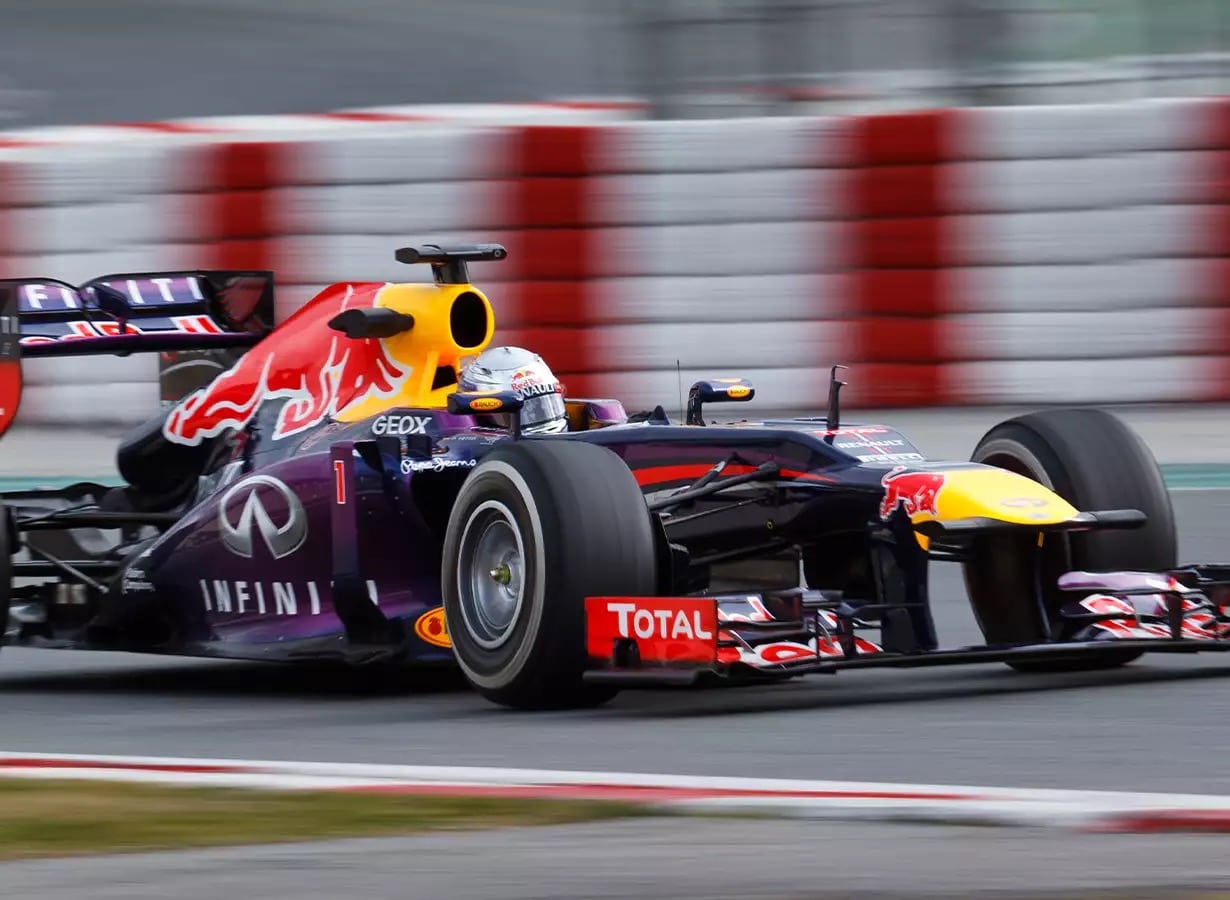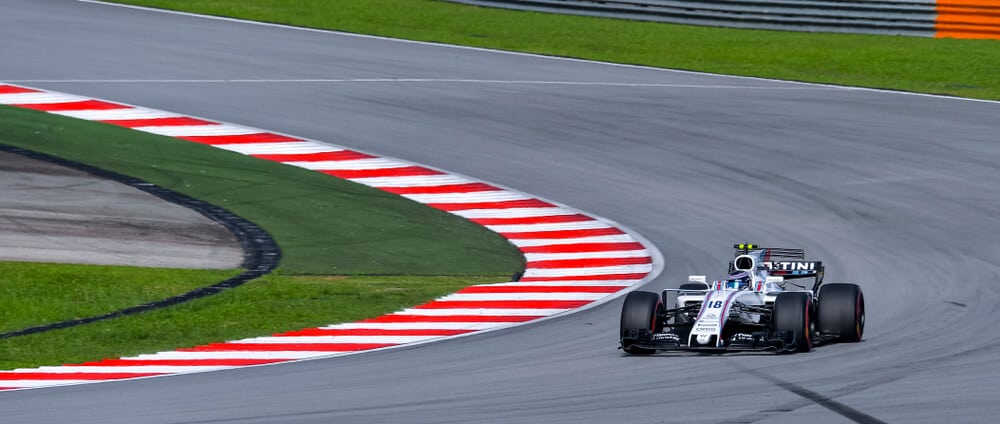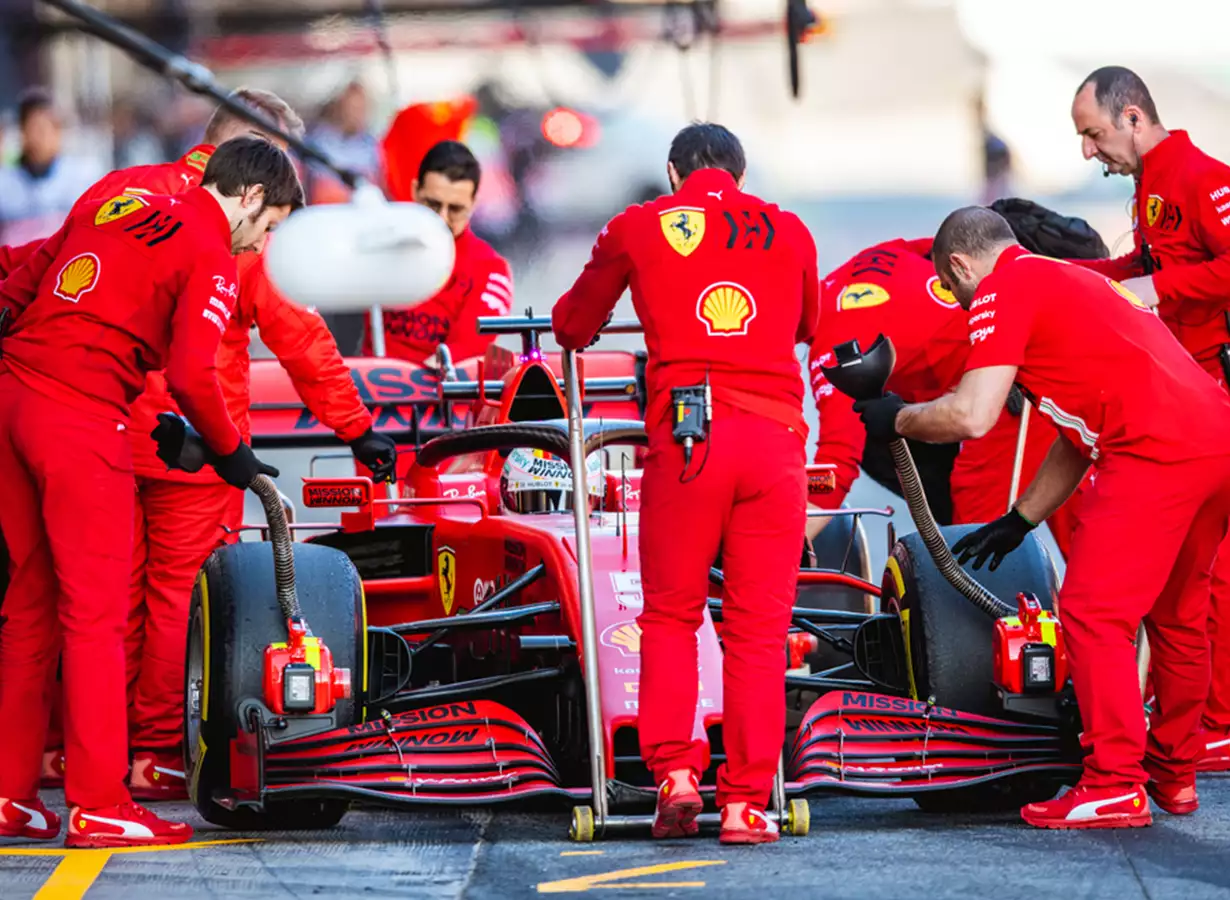Endplates have been in use in F1 for a number of years, but teams are still finding ways to improve their design and function.
In this blog post, we’ll take a closer look at the endplates and discuss some of the latest developments. We’ll also explore why endplates are so important and discuss how they can impact performance. Stay tuned for more information on this exciting topic!
Table of Contents
Watch this video to see the evolution of front wings and their endplates.
What is an endplate in F1?
The endplate is a piece of bodywork that can be found at the limit of a Wing, be it the Front or Rear Wing. The purpose of the endplate is to improve aerodynamic performance by reducing drag and increasing downforce.
Endplates are usually made from carbon fiber and are attached to the car with several mounting points. The endplate itself is usually perforated, which allows air to flow through it and around the wing. This helps to reduce drag and improve airflow.
Some teams have experimented with different shapes for their endplates, but the general design has remained fairly similar over the years. Moreover, the FIA has some regulations in place regarding the size and shape of endplates, which helps to keep the playing field level.
Key takeaways
- Endplates are aerodynamic devices that are attached to the wing of a Formula One car.
- They help to improve the car’s aerodynamic performance by directing airflow around the back of the car.
- Endplates can be made from different materials, such as carbon fiber or aluminum.
- The shape of an endplate can also vary, depending on the aerodynamic requirements of the car.

Photo showing the endplate on a front wing.
Understanding Endplates
Now that we have a basic understanding of what an endplate is, let’s take a closer look at how it works:
How does an endplate work?
Endplates help to improve the aerodynamic performance of a car by directing airflow around the back of the car. When air hits the endplate, it is forced to flow around the wing and down the sides of the car. This helps to reduce drag and improve airflow.
The perforations in the endplate also help to reduce drag by allowing air to flow through them. This helps to keep the car’s wake clean and improve airflow around the car.
If we talk about the mechanical part, endplates can also be used to adjust the balance of the car. By adding or removing weight from the endplates, teams can fine-tune the handling of their car.
Moreover, Endplates are also relatively simple and inexpensive to produce, which makes them a popular choice for teams looking to improve their performance.
Varying degrees of endplates
Endplate angles can be varied to suit the needs of the car. A steeper angle will create more downforce but will also increase drag. A shallower angle will do the opposite.
Teams usually start with a basic endplate shape and then test different angles to see what works best for their car. The angle can also be changed during a race, depending on the conditions.
Fake kerbs and artificial grass
In recent years, we’ve seen the introduction of fake kerbs and artificial grass on some tracks. These are designed to improve safety by providing a softer surface for drivers to hit in case of an accident.
However, these surfaces can also have an impact on endplates. Fake kerbs can cause the endplates to flex, which can impact the aerodynamic performance of the F1 car.
Some teams have experimented with different materials for their endplates in order to mitigate these effects. However, it’s still an area that is being actively developed, and we may see further changes in the future.
Endplates have been in use in F1 for a number of years, but teams are still finding ways to improve their design and function.
Frequently asked questions about Endplates
What do endplates on an F1 car do?
How much does a frontwing on a F1 car cost?
What is an endplate made of??
Conclusion
So there you have it! That’s everything you need to know about endplates in Formula One. Endplates are an important part of the car and can have a significant impact on its performance. teams spend a lot of time developing and testing different endplate designs in order to find the perfect balance for their car. Next time you’re watching a race, keep an eye out for the endplates and see how they impact the car’s performance.
Learn more about Formula One
Want to learn more about F1? Then visit our Formula 1 glossary and dictionary.




